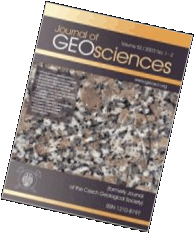Original Paper
The lower Vltava River Pluton: a semi-hidden intrusive complex in Neoproterozoic at the northern outskirts of Prague, Central Bohemia
Journal of the Czech Geological Society, volume 50 (2005), issue 3-4, 71 - 80
DOI: http://doi.org/10.3190/JCGS.978
Abundant dykes penetrate the Neoproterozoic volcanosedimetary sequences between the northern periphery of Prague and the towns of Kralupy n. Vlt. and Neratovice. Their petrographic character ranges from granite porphyries up to diabases. They are associated with small bodies of abyssal rocks of granite, granodiorite, tonalite, diorite and gabbro compositions. All these lithologies form a large composite plutonic complex termed Lower Vltava River Pluton, most of which is covered by sediments. Scattered outcrops represent only an apical part exposed at the present denudation level. The whole rock major-element geochemistry shows following characteristics: acid to basic (however not ultrabasic) span, medium to high-K calc-alkaline affinity for most of the rocks, medium- to high potassic and metaluminous to peraluminous compositions and probably post-orogenic tectonomagmatic setting. Field relations indicate a Cambrian age of the magmatic activity.
Webdesign inspired by aTeo. Hosted at the server of the Institute of Petrology and Structural Geology, Charles University, Prague.
ISSN: 1803-1943 (online), 1802-6222 (print)
email: jgeosci(at)jgeosci.org


IF (WoS, 2023): 1.1
5 YEAR IF (WoS, 2023): 1.5
Policy: Open Access
ISSN: 1802-6222
E-ISSN: 1803-1943
 Export to Mendeley
Export to Mendeley